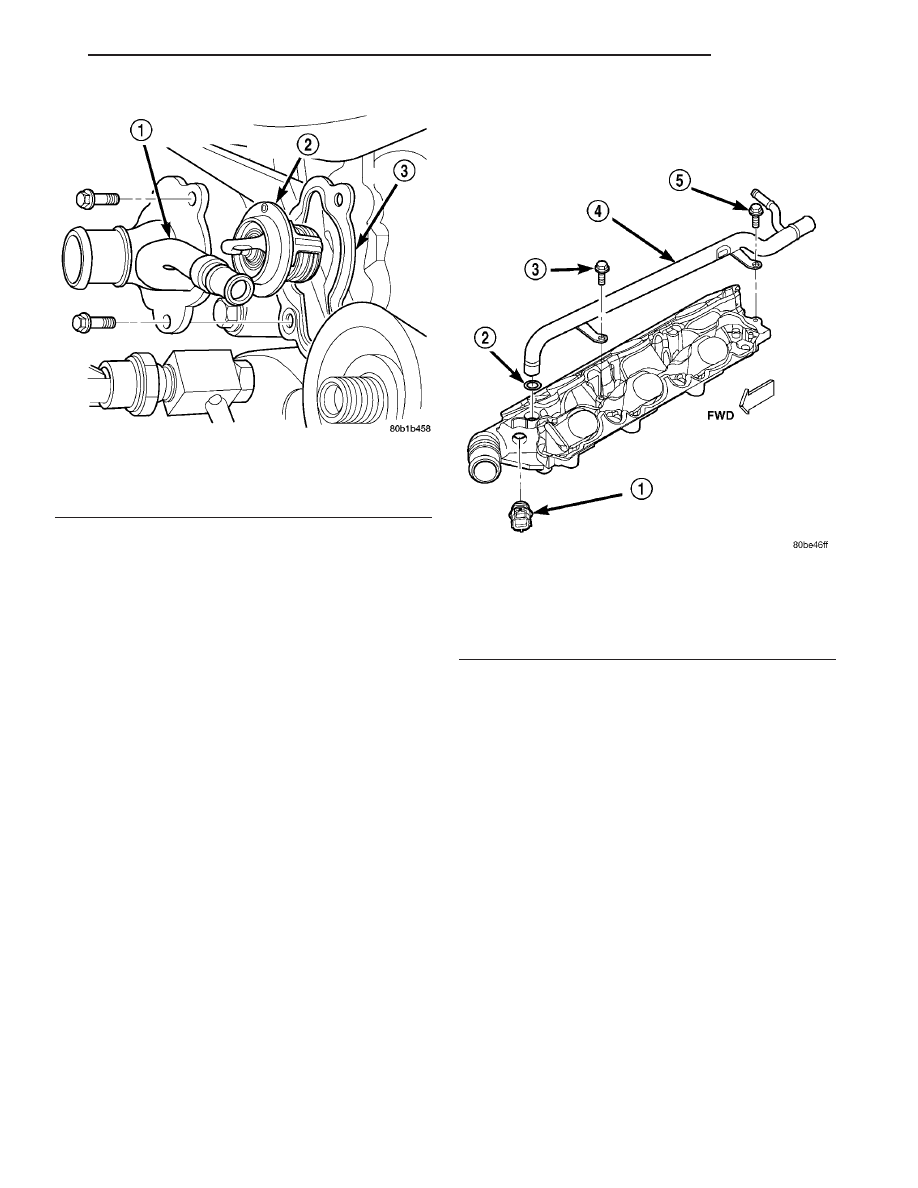Chrysler Pacifica. Manual - part 468

(4) Connect heater and radiator hoses and install
hose clamps.
(5) Connect electrical connectors to engine oil and
power steering pressure switches.
(6) Lower vehicle and connect negative cable to
remote jumper terminal.
(7) Refill cooling system (Refer to 7 - COOLING -
STANDARD PROCEDURE).
(8) Connect negative cable to remote jumper termi-
nal.
HEATER SUPPLY TUBE
REMOVAL
WARNING: DO NOT REMOVE PRESSURE CAP
WITH
SYSTEM
HOT
AND
UNDER
PRESSURE
BECAUSE SERIOUS BURNS FROM COOLANT CAN
OCCUR.
(1) Drain cooling system. (Refer to 7 - COOLING -
STANDARD PROCEDURE).
(2) Remove
upper
and
lower
intake
manifold
(Refer to 9 - ENGINE/MANIFOLDS/INTAKE MANI-
FOLD - REMOVAL).
(3) Position lower intake manifold upside down on
bench and remove the tube retaining bolt (Fig. 7).
(4) Remove tube from manifold and discard O-ring.
INSTALLATION
(1) Clean heater tube sealing surfaces.
(2) Inspect heater tube O-ring. Replace as neces-
sary.
(3) Lubricate O-ring with a silicone type grease
such as Mopar
t Dielectric Grease (Fig. 7).
(4) Install O-ring on heater tube.
(5) Install heater tube on manifold.
(6) Install retaining bolts and tighten to 12 N·m
(105 in. lbs.).
(7) Install lower and upper intake manifolds (Refer
to 9 - ENGINE/MANIFOLDS/INTAKE MANIFOLD -
INSTALLATION).
(8) Refill cooling system (Refer to 7 - COOLING -
STANDARD PROCEDURE).
Fig. 6 Thermostat and Housing - 3.5L Engines
1 - THERMOSTAT HOUSING/COOLANT INLET
2 - THERMOSTAT
3 - GASKET
Fig. 7 Heater Supply Tube - 3.5L
1 - COOLANT TEMPERATURE SENSOR
2 - O-RING
3 - BOLT
4 - HEATER SUPPLY TUBE
5 - BOLT
CS
ENGINE
7 - 19
ENGINE COOLANT THERMOSTAT (Continued)